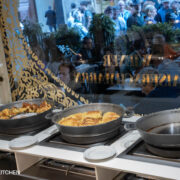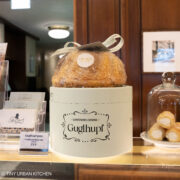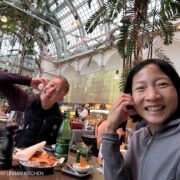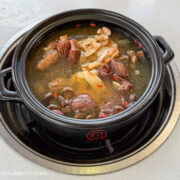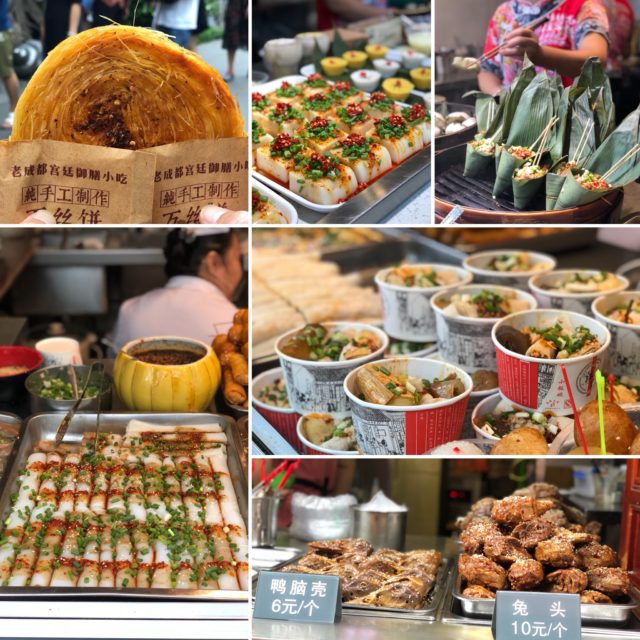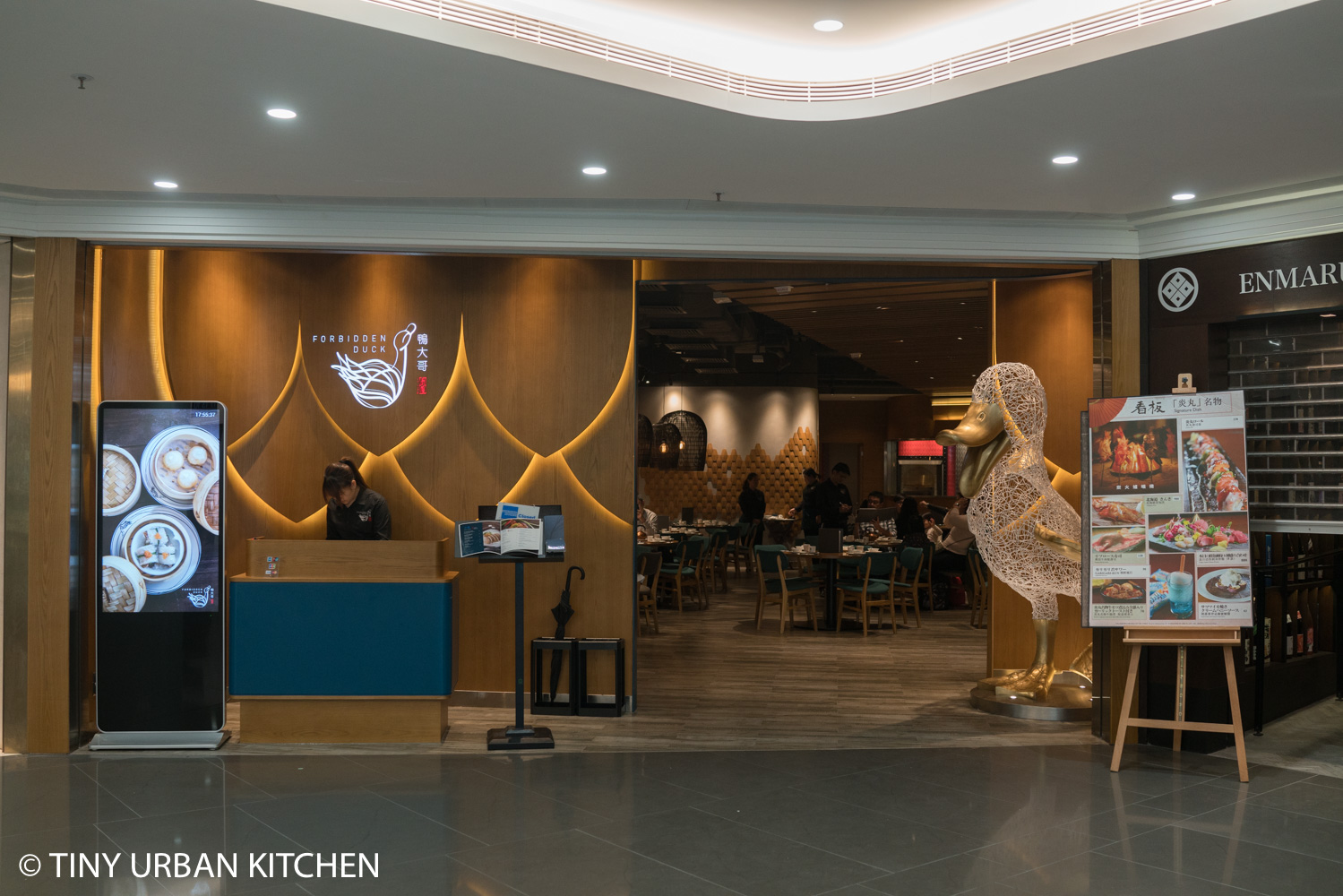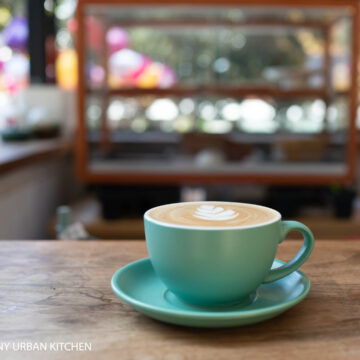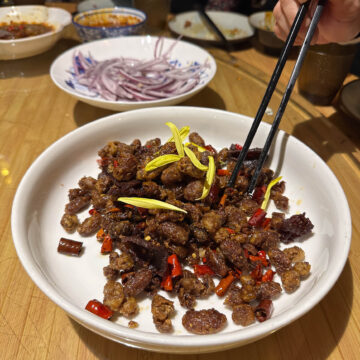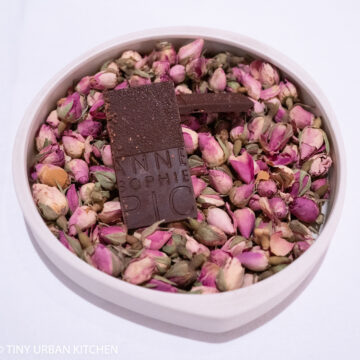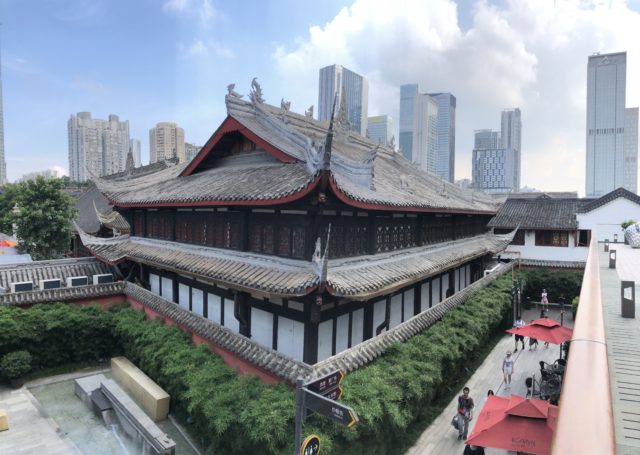
Chengdu is the capital city of Sichuan province and a food lover's dream. Sichuan food is one China's recognized "Eight Great Cuisines", and many think Sichuan is the best of the bunch. The locals here are obsessed about food, and they create a staggering array of flavor combinations using chilis, herbs, vinegars, and other sauces and spices. The cuisine is fiery, bold, and full of complexity.
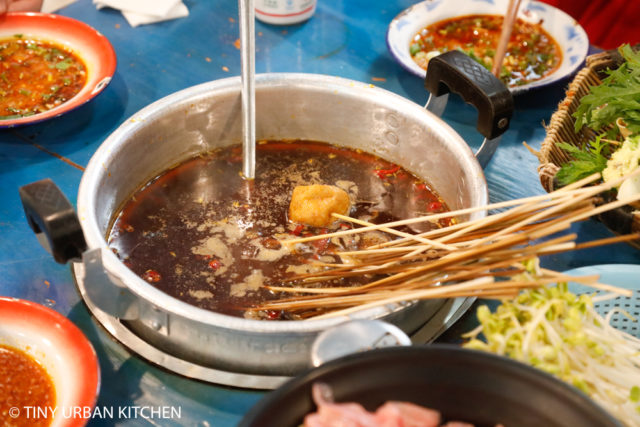
We had a blast eating our way through Chengdu, though three days was just enough the scratch the surface. Here is a look at what we ate!
Roasted Fish
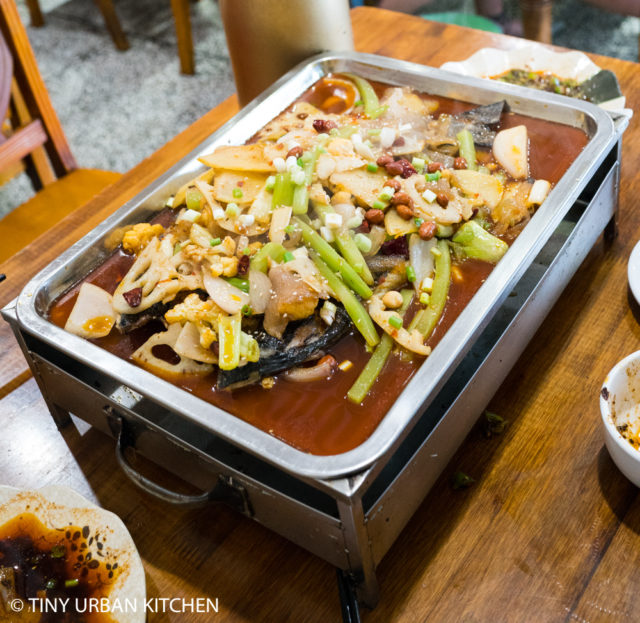
Our first meal in Chengdu was at a roast fish place near our hotel called 三江烤魚 (sānjiāng kǎo yú), which literally means "three river roasted fish".
烤魚 (kǎo yú), which means roasted or grilled fish, is a spicy dish that involves a whole fish (you choose the type of fish) braised with all sorts of vegetables in a fragrant spicy soup. The dish is usually served in a rectangular metal tray which is heated with a portable heating element throughout the meal.
The flavors were outstanding and I loved eating the different vegetables together with the fish. Our dish had a broccoli-stem like vegetable called celtuce or asparagus lettuce 萵筍 (wō sǔn), 蓮藕 (lián'ǒu) lotus root, potato, cauliflower, peanuts, and lots of garlic! It was phenomenal and this restaurant turned out to be my favorite from the entire trip.
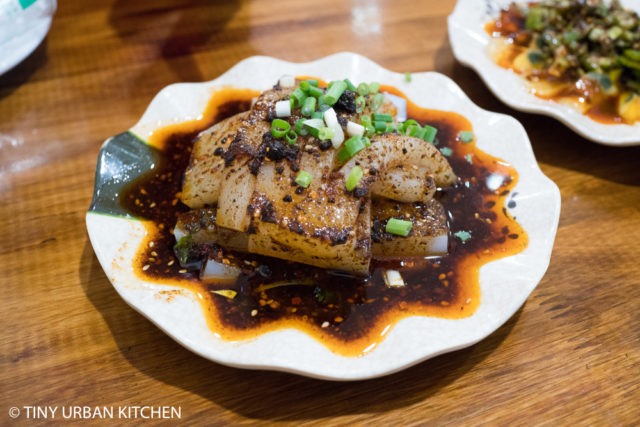
We also got cold jelly noodles (涼粉 liáng fěn) slathered in a flavorful chili oil, which was fantastic. In fact, I fell in love with Chengdu style jelly noodles and I think it's one of my favorite dishes from Chengdu.
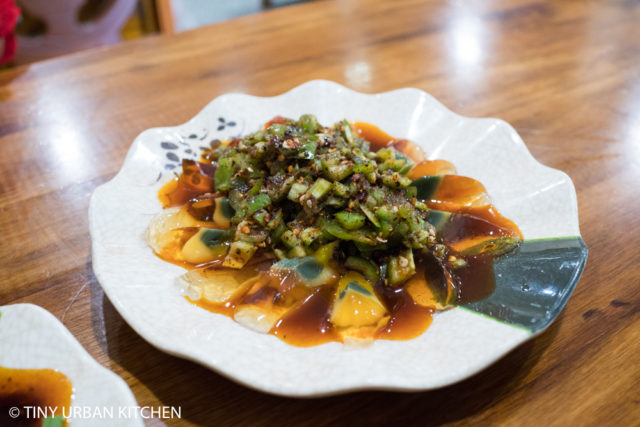
One of my favorite appetizers was thousand year old eggs (皮蛋 pídàn) prepared Sichuan style, topped with hot peppers, chili powder, and soy sauce.
Chili Wontons & Noodles
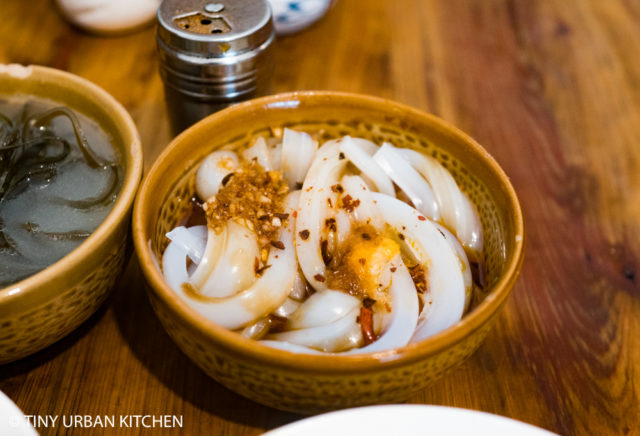
Cold jelly noodles 凉皮 (liángpí)
Chun Yang Guan Noodle Shop (纯阳馆鱼香排骨面) chún yáng guǎn is a "hole-in-the-wall" open air street noodle shop made famous by Anthony Bourdain in Parts Unknown. It's best known for its Sichuan wontons in chili oil, hóng yóu chǎo shǒu 紅油炒手, which have a fantastic deep, rich flavor that's actually not over-the-top spicy.
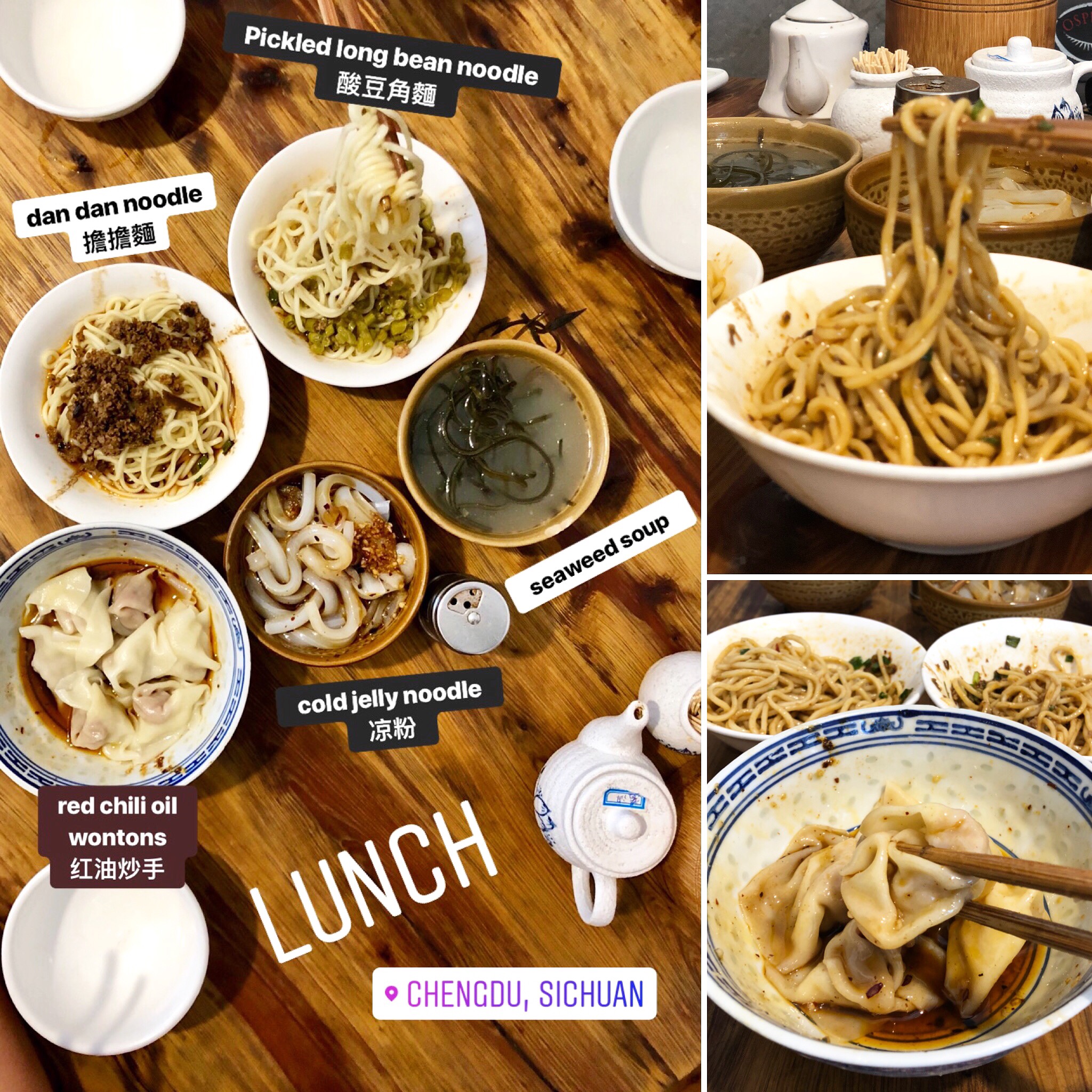
Here's a run-down of all the dishes we enjoyed: dan dan noodles 擔擔麵, “cow pea” (pickled long bean) noodles 豇豆角, red chili oil noodles 紅油炒手, cold jelly noodles 涼皮, and a simple seaweed soup (not spicy!! 😅). The wontons were our favorite of the bunch. Other dishes were perfectly enjoyable, though didn't stand out as much as the dumplings did.
Hot Pot 火鍋
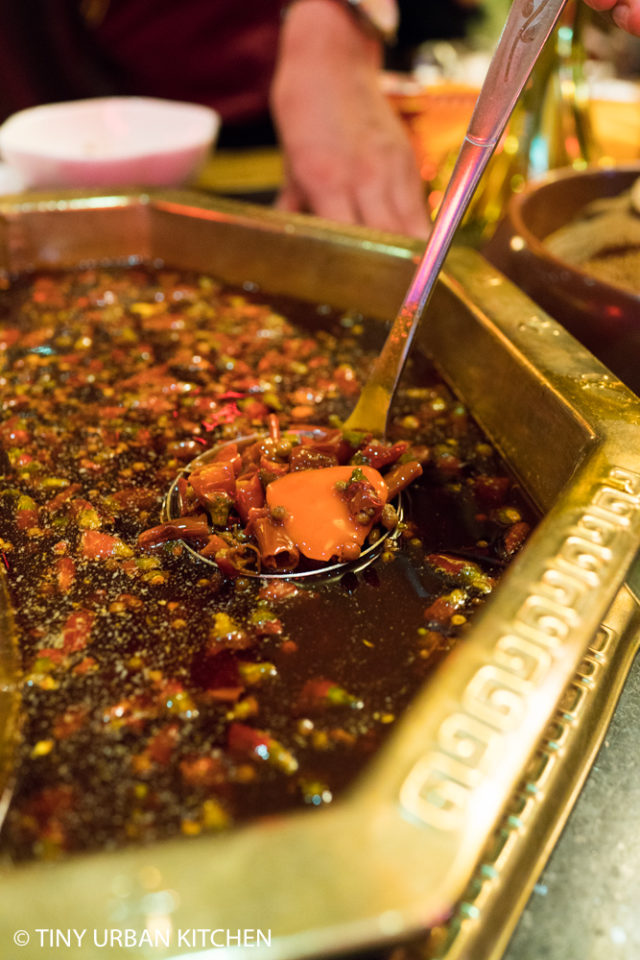
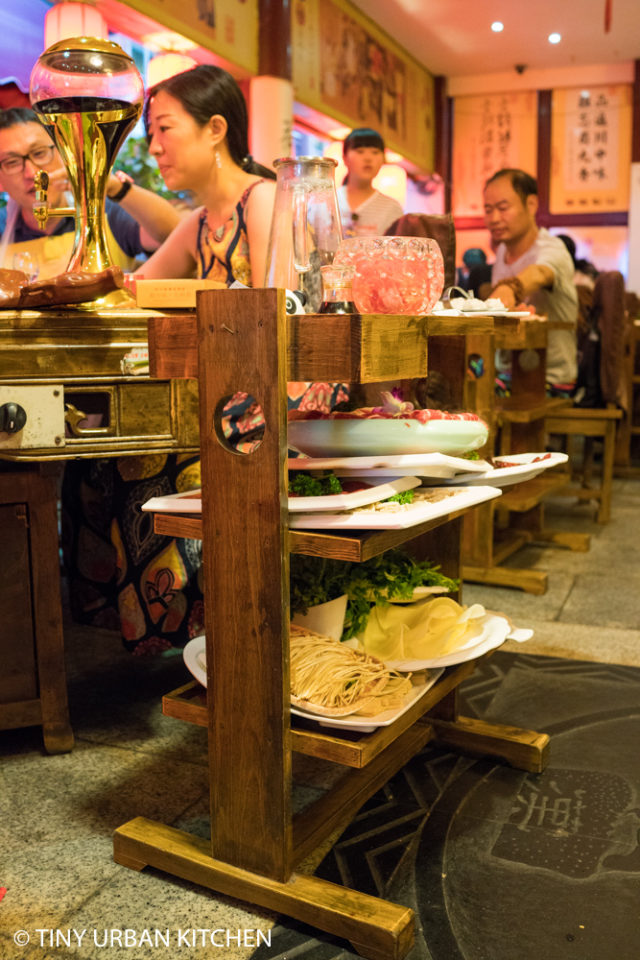
Spicy hot pot is the quintessential Chengdu experience.There are TONS of hot pot restaurants all over Chengdu. Honestly, it sort of blew my mind how many hot pot restaurants there would be on one street alone. Did the locals really eat hot pot THAT much? I actually believe they do. I highly recommend getting a ying yang two-compartment hot pot because you will want to have the opportunity to take a break from the spicy side!
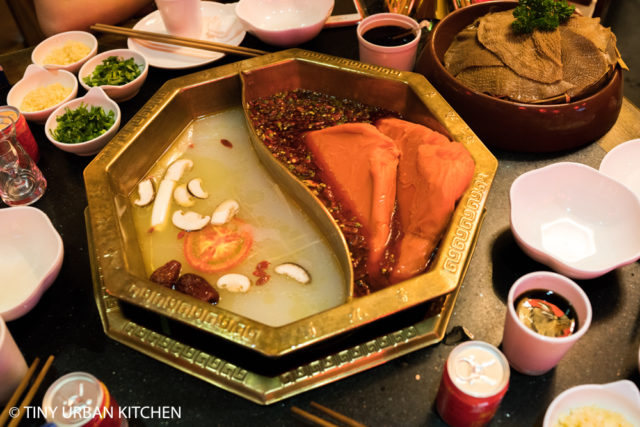
The Sichuan version uses two huge blocks of beef tallow (fat) melted in the pot 😱.
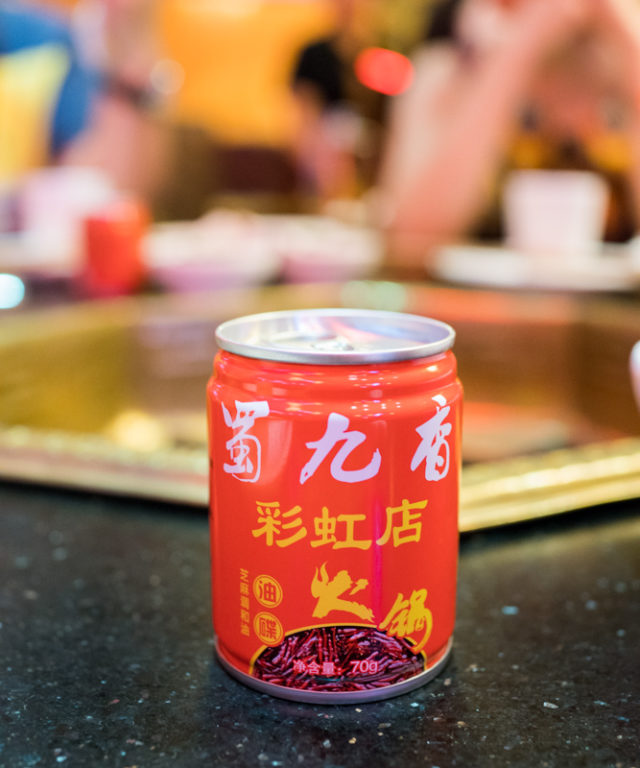
AND then you dip your food into your sauce, which is made of oil (every restaurant’s has its own special flavor - this one was sesame oil based). You need to coat your food with the oil otherwise it is too spicy!!
Skewers Hot Pot 串串

I absolutely love the Chinese character for skewers, pronounced chuàn chuàn and written like this 串串. Don't they look just like skewers? Chuan chuan is a form of hot pot where everything comes on a skewer and you dip all sorts of different meats, offal, and vegetables into a scalding pot of spicy broth. Each skewer only has one or two pieces, so you can eat A LOT of different skewers and try all different types of food.
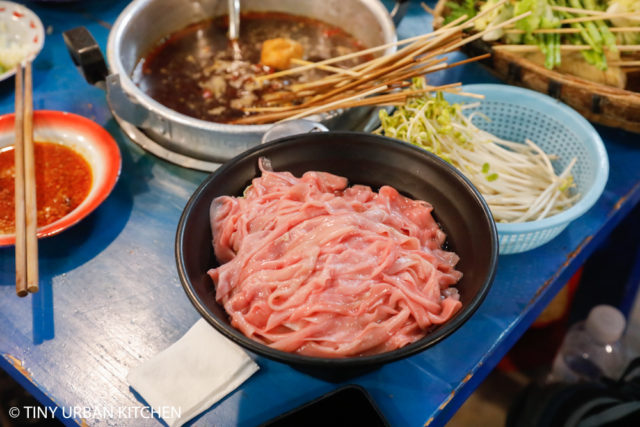
We went to a very popular place called 马路边边 [馬路邊邊] mǎlù biān biān, which literally translates to "side of the road". It was so popular, in fact, that we decided not to wait 1.5 hours for a table the first evening (at 6PM) and instead asked the hostess what was the best strategy in coming. She said lunch wasn't as crowded, and if we came by 11AM, we wouldn't have to wait in line. We ended up coming the next day around 11:30AM, and we had no trouble getting a table.
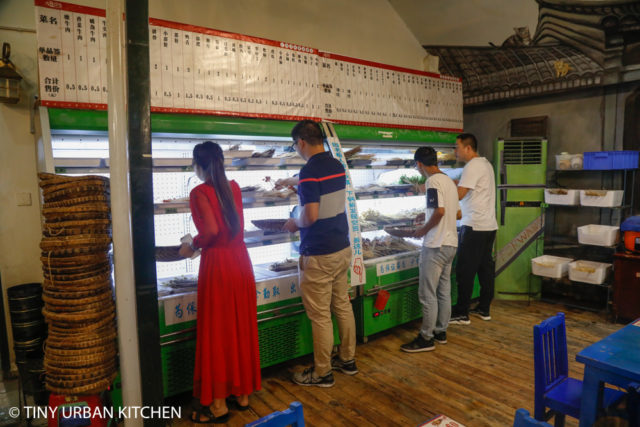
You choose your own skewers from a huge refrigerated buffet area. Each skewer is only 0.50 RMB (7 cents USD) - so cheap! The broth is spicy, the dipping sauce is spicy, everything is spicy! We only ordered the lowest level of spice, which is called 微辣 (wēi là), yet it was still quite spicy.
I was thankful for the sauce toppings bar, where you could make your own dipping sauce from all sorts of ingredients, including satay sauce, chili sauce, chili oil, ground peanuts, sesame oil, and all sorts of different herbs like cilantro, garlic, and scallions. It included plenty of fresh non-spicy ingredients I could put in my sauce, which helped a lot!
A Sichuan Dinner - Tao Lin Restaurant (饕林 tāo lín)
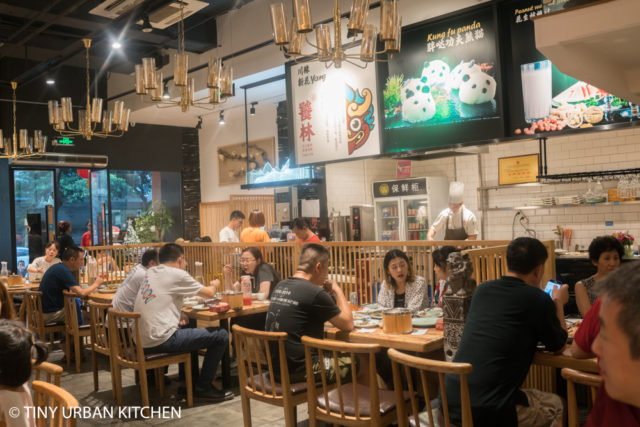
On our final night in Chengdu, we ate at another very, very popular restaurant called tāo lín (饕林). We probably waited closed to an hour in line, though they provided chairs outside and even offered tea while we wait. We were able to peruse the menu while we waited and even marked which dishes we wanted on the paper order form they gave us.
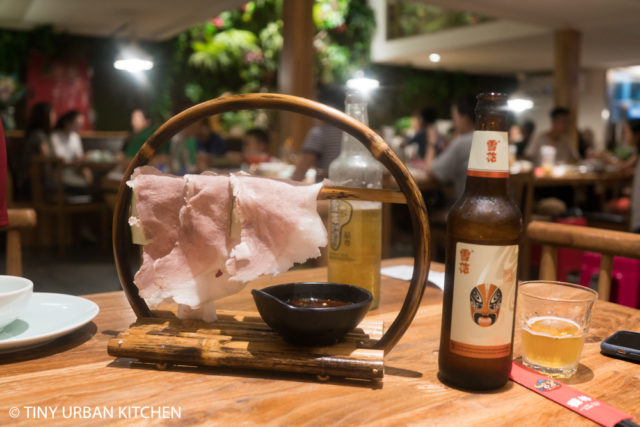
The food was excellent and we very much enjoyed it. It's so surprise why this place is so popular. Pictured above, thinly sliced pork with a special dipping sauce. Bryan also ordered one of their local Chinese beers.
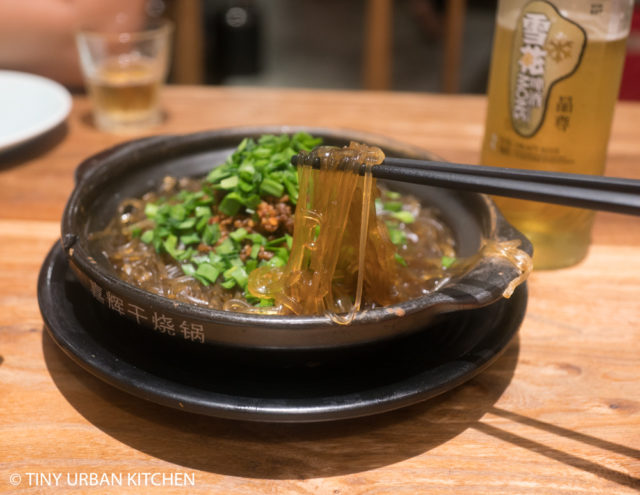
Glass noodles with pork, also known as "ants crawling up a tree." (螞蟻上樹)
Street Snacks
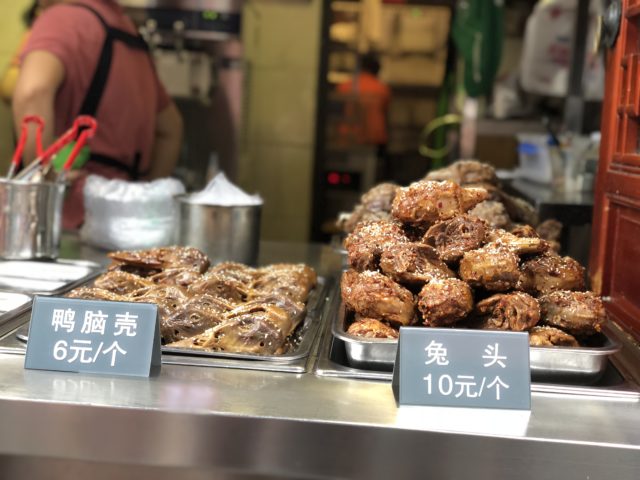
One of the most unusual and famous snacks in Chengdu is a spicy rabbit head. Sichuan people eat A LOT of rabbit. In fact, close to 70% of all the rabbits consumed in China are consumed in Sichuan. Rabbit heads come in all different sorts of flavors, but the traditional mala - spicy and numbing - is the most popular.
I couldn't bring myself to try a rabbit head, but Bryan was much more adventurous and actually ate two heads on two separate occasions while he was in Chengdu. He said the flavor was good, though it was very, very spicy! (Pictured above, duck heads on the left, rabbit heads on the right).
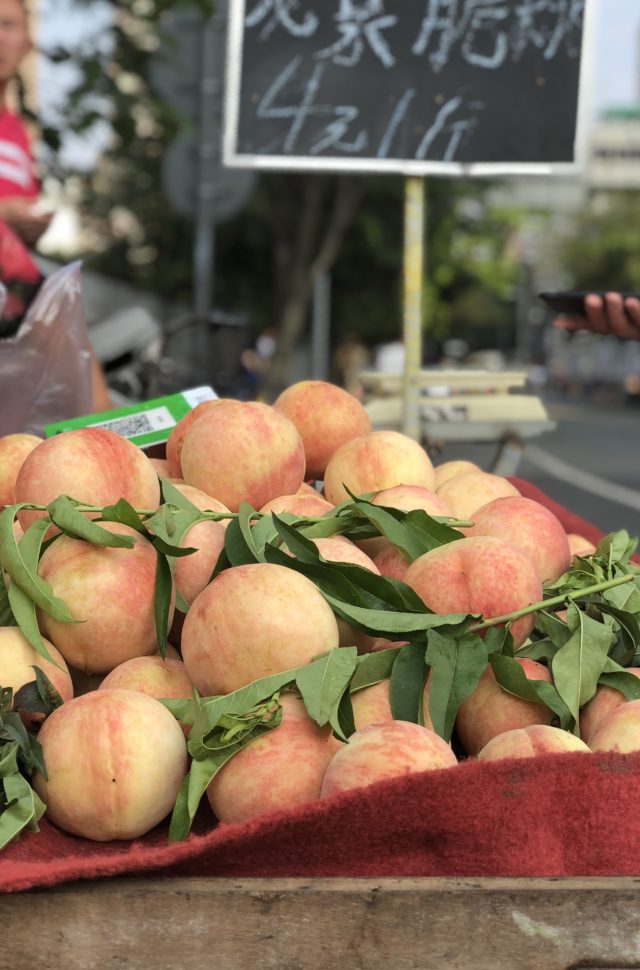
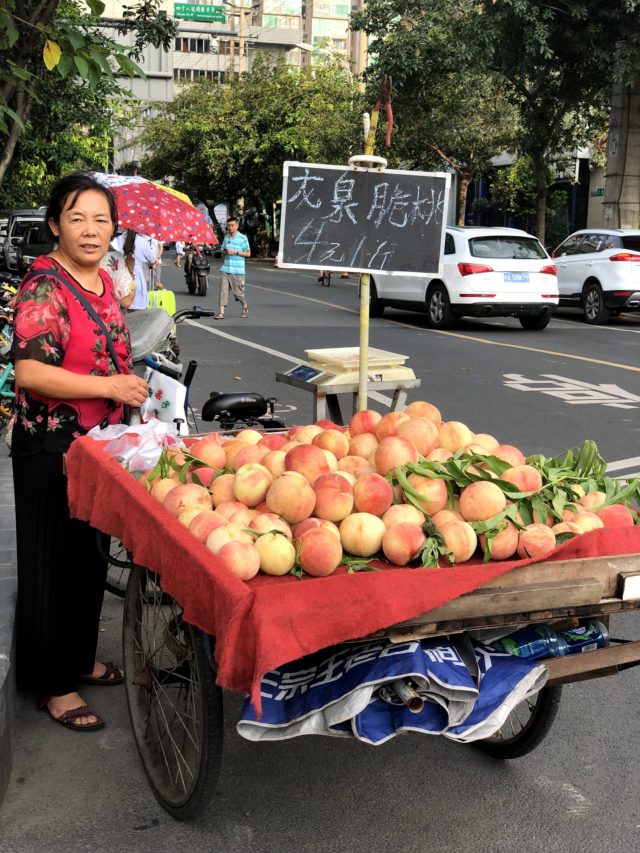
Chengdu is also known for its peaches and it's not unusual to see fruit vendors selling these large, white-fleshed peaches on the street. These peaches are from Longquan in Chengdu and are sweet and crunchy. 龍泉脃桃
Finally, there are many places throughout Chengdu that are lined with street vendors selling all different sorts of street snacks. We tried some, but it was impossible to try them all. The common theme seemed to be that virtually everything had some sort of spice or heat, whether it be tofu, rice rolls, glass noodles, or various types of meat. We did not dedicate an entire meal to street food, so at the end of the day, our stomach space was limited and we weren't able to try as much in this arena this time around.
Concluding Thoughts on Chengdu Food
And that's a wrap for Chengdu!
Chengdu is a beautiful city with fascinating history, phenomenal food, and pandas! I highly recommend visiting. I barely even touched the surface of the food, and I feel like there are so many other things to try. It will likely take multiple trips before I will feel like I really understand Sichuan cuisine.
I'm thrilled to have been able to sample a bit of it. I can't wait to come back and try more things!
I leave you with a silly, (impromptu video of me dining at a hot pot restaurant in Chengdu and showing you just a glimpse of what it's like. Enjoy!
Related Posts
China Panda Research Base - Chengdu
Chengdu Weekend Trip - Sichuan China
Sichuan Restaurants in Hong Kong
Shaanxi Cuisine: Xian and the Terra Cotta Warriors
Shanghai: Eating at the World Expo
Wandering the Streets of Beijing
The Best of Beijing Street Food: 九門小吃









